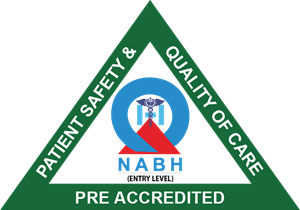- Home
- About
- Specialities
Centers of Excellence
- Facilities
- Procedures
Procedures
- Doctor List
- Health Packages
- Contact


Bronchoscopy is performed by a doctor who specializes in lung disorders (a pulmonologist). During bronchoscopy, a thin tube (bronchoscope) is passed through your nose or mouth, down the throat and into the lungs.
A flexible bronchoscope is commonly used to look at the lungs and air passages. Sometimes, a rigid bronchoscope may be needed if there’s a lot of bleeding in the lungs or a large object is stuck in the airways.
Common reasons for doing a bronchoscopy are:
In people with lung cancer, a bronchoscope with a built-in ultrasound probe may be used to check the lymph nodes in the chest. This is called endobronchial ultrasound (EBUS) and helps doctors determine the appropriate treatment. EBUS may be used for other types of cancer to determine if the cancer has spread.
Complications from bronchoscopy are uncommon and may be related to the procedure itself or to the sedative or topical anaesthetic used during the process.
Bronchoscopy is usually done in a procedure room in a clinic or in a hospital operating room. The entire procedure, including prep and recovery time, typically takes about four hours. Bronchoscopy itself usually lasts about 30 to 60 minutes.
You’ll be asked to sit or lie back on a table or a bed with your arms at your sides. Monitors will be connected to track your heart rate, blood pressure and oxygen level during the procedure.
An intravenous sedative will be given to help you relax. You’ll feel sleepy, but you’ll still be awake, breathing on your own, and able to indicate a response to any questions your doctor may ask you during the procedure.
A numbing medication called an anaesthetic will be sprayed in your throat to numb the areas, and to lessen gagging and coughing during bronchoscopy. The medicine may taste unpleasant, but the taste will go away.
The bronchoscope is placed in your nose or mouth. The bronchoscope is advanced slowly down the back of your throat, through the vocal cords and into the airways. It may feel uncomfortable, but it shouldn’t hurt. Our health care team will try to make you as comfortable as possible.
Samples of tissue and fluid may be taken and procedures may be performed using devices passed through the bronchoscope. The bronchoscope has a light and a very small camera at its tip that displays pictures on a monitor to help guide your doctor in performing the procedure.
You’ll be monitored for several hours after bronchoscopy. Your mouth and throat will probably be numb for a couple of hours. You won’t be allowed to eat or drink until the numbness wears off. This helps keep food and liquids from entering your airways and lungs.
When your mouth and throat are no longer numb, and you’re able to swallow and cough normally again, you can have something to drink. Start with sips of water. Then you may eat soft foods.
You may have a mild sore throat, hoarseness, a cough or muscle aches. This is normal. Warm water gargles and throat lozenges can help lessen the discomfort. Just be sure all the numbness is gone before you try gargling or sucking on lozenges.
| -- | -- |
Get to know our dedicated group of board certified doctors with exemplary qualifications, here to assist you on your healthcare journey.
These are stories that involves resilience, persistence & personal strength. Overcoming odds, difficulty and of course challenges of health, these stories ought to inspire us to look beyond the difficulties because there is always more to our lives than just challenges


You can choose to walk in to meet our doctors in their OPD or better still to book your appointment on line. You don’t need to wait. We have specialists in almost all fields of modern medicine.
We have rendered services in Homoeopathy for over 5 decades.
© copyright 2021 | All rights reserved